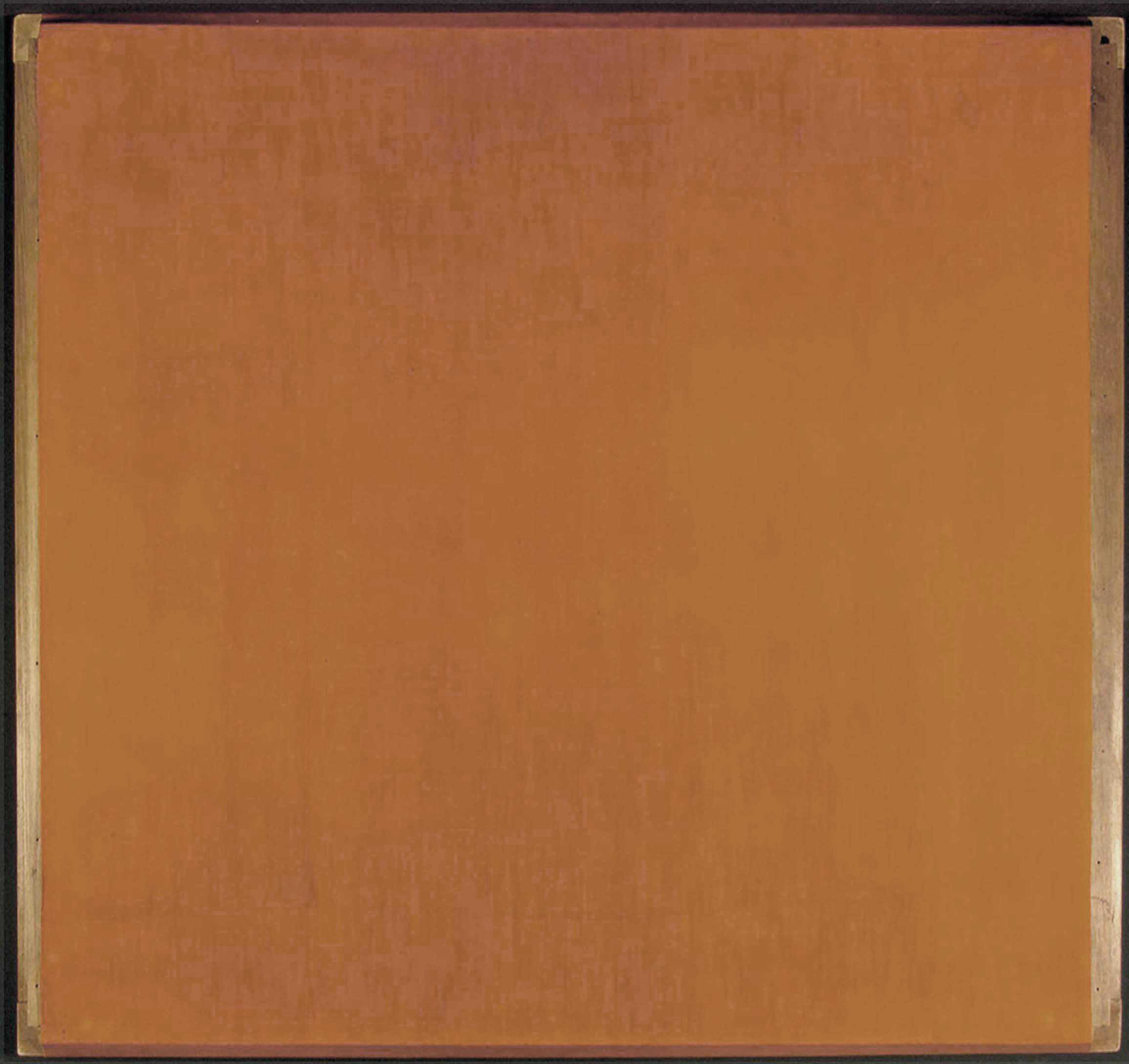La B, 1963
GPO-0035
B
Cotton fabric laid down on plywood panel mounted on a stretcher
60 x 60 cm
Signed and dated on the verso on a white paper square: “Giulio Paolini” (upper left), “1963” (lower left)
Private collection, Milan
A piece of orange fabric is wrapped around a plywood panel leaving the edges to either side visible. The four corners of the panel are orthogonally shaped so as to reveal the slightly projecting stretcher on which it is mounted. On the retro is a small newspaper clipping that reads “La B”, taken from the beginning of a title.
This work is part of a group of works (from GPO-0028 to GPO-0049) whose common denominator is the presence of an intervention on both the recto and the verso of the painting. Surfaces of various types take turns appearing on the recto (painted paper, graph paper, photographic reproductions, shaped wooden panels), while on the verso (hidden from view) we find the details of images and printed words taken from magazines or from books. The title, when specified, refers to a textual element present on the verso. The artist explains that: “Just as on the surface various elements alternate among themselves, but always remain ‘blind’, in the sense that they tend not to supply an image, but are there for their own sake, occupying that given space, so the title itself is absolutely autonomous with respect to the surface [...], constituted by a fragment of words and, at times, images, following the signature and the date, on a white paper square on the back of the picture” (1972).1 The subtraction of the painting from its function as a vehicle for an image is a continuation of the study experimented with in some previous works that focus on a subject that, albeit mentioned, remains an unexpressed presence: the title refers to something that isn't visible (in that it is applied to the verso), while the recto presents a mute image or in any case one that is free from any rational relationship with the title.
1 G. Paolini in G. Celant, Giulio Paolini (New York: Sonnabend Press, 1972), p. 34 (revised translation, republished in Giulio Paolini 1960-1972, edited by G. Celant [Milan: Fondazione Prada, 2003], p. 122), reprint (Cinisello Balsamo: Silvana Editoriale, 2019), p. 34. Cf. also the artist's remarks in C. Lonzi, Autoritratto (Bari: De Donato Editore, 1969), p. 367, reprint (Milan: Et al./Edizioni, 2010), p. 280, English edition (Brussels-London: Divided Publishing, 2021), p. 320.
| • | G. Paolini in G. Celant, Giulio Paolini (New York: Sonnabend Press, 1972), pp. 30-31; republished in Giulio Paolini 1960-1972, edited by G. Celant (Milan: Fondazione Prada, 2003), p. 122; reprint (Cinisello Balsamo: Silvana Editoriale, 2019). |
| • | G. Celant, Giulio Paolini (New York: Sonnabend Press, 1972), pp. 28-29, repr. no. 22 p. 32 (recto); republished in Giulio Paolini 1960-1972, edited by Id. (Milan: Fondazione Prada, 2003), p. 110, repr. p. 86 (cropped on all four sides); reprint (Cinisello Balsamo: Silvana Editoriale, 2019). |
| • | M. Disch, Giulio Paolini. Catalogo ragionato 1960-1999, vol. 1 (Milan: Skira editore, 2008), cat. no. 35 p. 72, col. repr. (recto and verso). |
| • | D. Soutif, "Filigrane. Paolini, il primo quadro e la storia dell’arte", in S. Bann et al., Il passato al presente. In tema 2 (Turin-Mantua: Fondazione Giulio e Anna Paolini and Corraini Edizioni, 2016), p. 94, not repr.; republished in French in Les Cahiers du Musée national d’art moderne 137 (Paris), Autumn, 2016, p. 80, not repr. |


